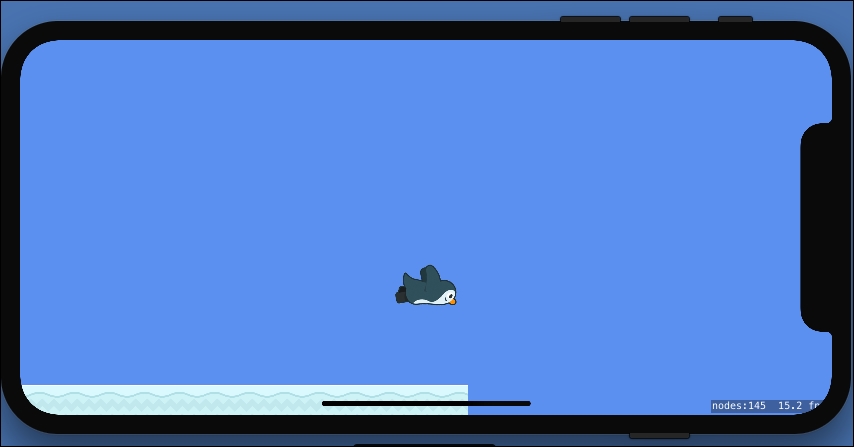This style of game usually moves the world forward at a constant speed. Rather than applying force or impulse, we can manually set a constant velocity for Pierre during every update. Open the Player.swift file and add this code at the bottom of the update function:
// Set a constant velocity to the right: self.physicsBody?.velocity.dx = 200
Run the project. Our protagonist penguin will move forward, past the swarm of bees and through the world. This works well, but you will quickly notice that the ground runs out as Pierre moves forward, as shown in this screenshot:

Recall that our ground is only as wide as the screen width multiplied by six. Rather than extending the ground further, we will move the ground's position at well-timed intervals. Since the ground is made up of repeating tiles, there are many opportunities to jump its position forward seamlessly. We simply need to figure out when the player has travelled the correct distance.



